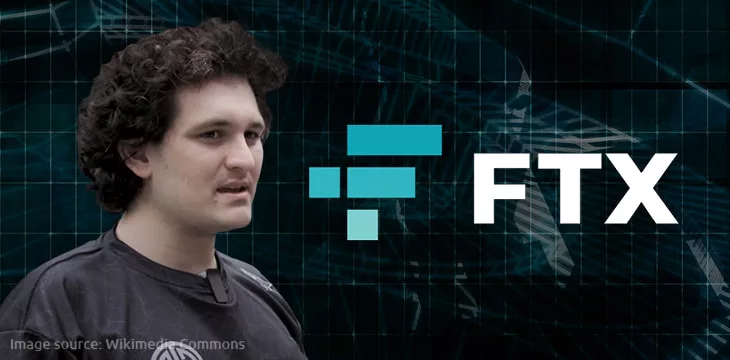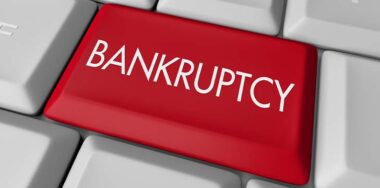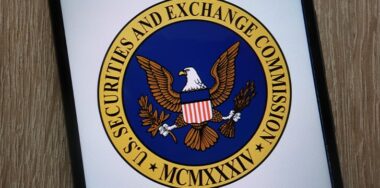FTX has been cleared to start dumping billions of dollars’ worth of customer tokens, while disgraced founder Sam Bankman-Fried (SBF) lost his bid to get out of jail before his criminal trial starts in October.
On Wednesday, U.S. Bankruptcy Court Judge John Dorsey approved the plan by FTX Debtors to start selling roughly $3.4 billion worth of BTC, ETH, SOL and other tokens that were stranded on the digital asset exchange when it filed for bankruptcy protection last November. (FTX Debtors is the court-appointed entity tasked with administering what’s left of SBF’s once-mighty ‘crypto’ empire.)
As detailed last month, the plan will see FTX’s assets transferred to Mike Novogratz’s Galaxy Digital firm for custody and eventual sale. FTX recently revealed that it holds $560 million worth of BTC, $192 million in ETC, $137 million in APT (Aptos), $120 million in USDT (Tether), $119 million XRP (Ripple) and a staggering $1.16 billion in SOL.
The new plan allows Galaxy to sell no more than $100 million worth of FTX assets in any single week, although that figure could be boosted to $200 million under certain circumstances. However, BTC, ETH and stablecoin redemptions are excluded from this total.
Plans to sell BTC/ETH/stables and other “insider-affiliated” tokens (read: FTX’s in-house FTT coins) will have to be communicated to the government-appointed Trustee and FTX creditor committees 10 days in advance and will be subject to their approval. The broader market will get no such consideration, with only redacted versions of these plans made available to the public.
The new plan also allows FTX/Galaxy to hedge their positions—BTC/ETH to start, but also other tokens upon notifying the court—to offset any potential devaluation of these tokens via the dumping of major quantities upon the market. FTX/Galaxy will also be allowed to stake BTC/ETH tokens to generate additional value for FTX customers, although Galaxy will earn commissions from its involvement in the whole process, which could negate any gains.
The idea that Novogratz will be padding his bottom line will no doubt gall some of FTX’s former customers who’ve been deprived of their property since last November. The 18-months-and-counting ‘crypto winter’ was largely sparked by the 2022 collapse of Terraform Labs and Novogratz was an avid booster of Terraform’s Luna token, so the idea that Novogratz is earning off this recovery effort will be hard to accept.
Also irked are those holding significant quantities of SOL, given SBF’s highly public financial support of the Solana project. SOL’s fiat price cratered following FTX’s bankruptcy, tumbling below $10 by the end of 2022. The token had rebounded above $27 by mid-July but has since slid back below $19 and will likely tumble further once that $1.16 billion worth—about 1/7th of its total market cap—gets dumped on the market.
Some token project leaders are already trying to downplay the impact of these mega-sales, some more effectively than others. On Monday, crypto crime scene fixture Justin Sun declared that he could (not would, mind you) buy all the TRX (Tron) tokens in the FTX kitty and thus “we are fine.”
Sun apparently didn’t see the irony of making the almost identical pledge by Caroline Ellison, former CEO of FTX’s affiliated market-maker Alameda Research, to buy all the FTT tokens held by rival exchange Binance after its boss Changpeng ‘CZ’ Zhao announced plans to sell the lot. Ellison was bluffing, and SBF’s house of crypto cards collapsed under its own weight shortly thereafter.
Do you despise douchebags?
Meanwhile, this week saw U.S. District Court Judge Lewis Kaplan reject SBF’s bid to secure release from his cell at the Manhattan Detention Center (MDC) before his trial for fraud, money laundering, etc. gets underway next month. Kaplan flatly rejected arguments by SBF’s attorneys that MDC’s technical limitations meant their client couldn’t properly prepare for his looming criminal trial.
Kaplan also delayed the start of jury selection by one day to October 3. Both SBF’s team and federal prosecutors have submitted their proposed voir dire questions for determining whether prospective jurors might have a bias for or against SBF. Prosecutors want to know (among other things) whether jurors are or were FTX customers, whether they have any personal digital asset experience and (hilariously) whether they’ve ever been involved in money laundering.
SBF’s team want to ask jurors if they or someone they know ever lost money trading tokens, and if so, “what do you believe caused that loss?” (Anyone who yells out ‘that frizzy-haired fat f*ck over there’ should probably excuse themselves now.)
SBF’s team will also ask jurors about their views on SBF’s highly publicized ties to the ‘effective altruism’ movement/scam—“do you have any negative opinion about amassing wealth to support causes to improve the world”—plus whether they think it’s wrong to contribute to political campaigns in order to secure favorable treatment, and whether they’re familiar with ADHD (just in case Sam starts playing League of Legends during cross-examination).
Founding father found lacking
SBF’s legal defense is being funded in part by a $10 million ‘gift’ he made to his father Joe Bankman in January 2022. This gift was almost certainly made with FTX customer cash and yet Daddy Fraudbucks hasn’t seen fit to return the money. Nor has Bankman been charged for his apparent role in FTX’s downfall, despite mounting evidence of his direct involvement in some of the crimes (although he did retain a New York-based criminal attorney in January).
On Wednesday, Bloomberg offered some specifics on Bankman’s role in his son’s businesses, ranging from the trivial—he played the role of a U.S. founding father opposite Larry David in FTX’s Super Bowl commercial—to former FTX staff saying Bankman attended company meetings and helped develop marketing materials to promote the launch of the FTT token—the collapse of which ultimately led to SBF’s empire crumbling.
Bankman, a professor at Stanford Law School, also assisted in the drafting of early legal documents at Alameda (the launch of which predated FTX). Bankman was also instrumental in connecting his son with Daniel Friedberg, who at the time was already complicit in the cover-up of a multi-million-dollar online poker fraud. The FTX Debtors have since documented Friedberg’s pivotal role in concealing and perpetuating SBF’s fraudulent activity.
Another ex-staffer claimed that, after Bankman was formally hired on at FTX, SBF would respond to virtually any legal question by saying he needed to “call Joe” before making a final decision. Since SBF’s trial lawyers have suggested they could “present an advice of counsel defense” to jurors, any attempt to throw Friedberg under the bus could result in SBF’s father becoming collateral damage.
There’s lots more here, including Bankman calling in a favor from a Stanford colleague who just happened to be a former commissioner of the U.S. Securities and Exchange Commission (SEC). This ex-SEC official personally called the Sequoia venture capital group to (a) vouch for SBF’s publicly stated goal of achieving full regulatory compliance, and (b) point out that SBF was the son of a friend.
Sequoia ended up investing $213.5 million in FTX, a stake they completely wrote down following FTX’s implosion. It was on the infamous 2021 call with Sequoia that SBF was observed playing League of Legends during his investment pitch, something that impressed the Sequoia team at the time. To paraphrase Homer Simpson, Lord help them, they’re just not that bright.
Insider fading
During the Consensus 2023 confab in Austin this April, SkyBridge Capital founder Anthony Scaramucci participated in a panel called FTX: What Happened? Before everything went south, FTX had taken a 30% stake in SkyBridge and the FTX bankruptcy files show this SkyBridge stake listed with a value of $45 million.
As further evidence of Bankman’s involvement, Scaramucci claimed that, four days before FTX filed for bankruptcy, he was contacted by SBF’s dad regarding “an asset-liability mismatch” at FTX and that SBF was “looking for some rescue finance.” Asked how much they were talking about, Bankman told Scaramucci “about a billion dollars” but Scaramucci said “later in the evening, that number went from $1 billion to $4.5 billion.”
Scaramucci flew down to the Bahamas the next day (November 8) and found SBF “disassociated” and his team “despondent.” Scaramucci said he quickly surmised that FTX was beyond saving, but it appears there were a few tricks left up SBF’s sleeve.
A recently released document from FTX’s bankruptcy proceeding shows three separate documents titled “Letter Agreement – Release and unwinding of certain relationships dated 11/9/2022.” These documents, dated two days before the bankruptcy filing, are linked to SkyBridge Capital II, LLC, SkyBridge Coin Fund LP and SkyBridge GP Holdings, LLC. The specifics of these letters remain, for the moment, unknown.
Going through withdrawal(s)
The FTX Debtors appear to be looking at how many other ‘friends of Sam/Joe’ may have used insider knowledge/connections to get their cash out of FTX before the curtain fell. The FTX Debtors released a chart (page 20 of this document) showing how much more cash could be added to the restitution pile if funds withdrawn shortly before FTX’s bankruptcy were clawed back.
For example, a total of $11.2 billion was withdrawn from FTX.com in the 15-day period preceding the bankruptcy filing—of which nearly $9.1 billion came from just 2,451 users. Another $2.24 billion was withdrawn from the U.S.-licensed FTX.US during this same period, of which $1.63 billion was withdrawn by just 565 customers. (The calculations exclude related parties and internal accounts.)
Going back 30 days pre-bankruptcy, there was over $16.2 billion withdrawn from both exchanges. Going back 60 days, the sum rises to $21.5 billion, and rises further to $25 billion over 90 days.
That 15-day period includes CoinDesk’s November 2 publication of an Alameda balance sheet that exposed the market-maker’s over-reliance on the FTT token. That publication sparked a ‘run on the bank’ by FTX customers large and small that accelerated FTX’s downfall, so not all of those 15-day withdrawals are necessarily suspect. But the FTX Debtors likely have the data to show how much was withdrawn by accounts in the know before FTX’s internal woes were publicly exposed.
Is the sky blue in Sam’s world?
Finally, Thursday saw The New York Times publish an article detailing a 15,000-word Twitter/X thread that SBF composed (but never posted) in January while under house arrest at his parents’ California home. The thread, which includes links to numerous FTX-related documents, was sent to crypto influencer Tiffany Fong, with whom SBF struck up a friendship following FTX’s collapse. Fong then shared them with Times reporter David Yaffe-Bellany.
The primary theme of the posts appears to be self-pity, with occasional breaks to throw Ellison under the bus for allegedly refusing to hedge Alameda’s financial positions. Alameda’s trading teams were notoriously reliable for mistiming the markets, ultimately creating a multi-billion-dollar deficit that SBF helped fill with FTX customer cash.
According to SBF, Ellison “continually avoided talking about risk management—dodging my suggestions—until it was too late … If Alameda had hedged, it would have remained solvent and prevented the entire unhappy story.” Fong shared some of SBF’s thoughts with ex-Alameda engineer Aditya Baradwaj, who pointed out that Alameda’s hedging would have been “irrelevant” if SBF hadn’t decided to commingle FTX customer deposits with Alameda’s corporate capital.
SBF said Ellison didn’t get along with Alameda’s other co-CEO Sam Trabucco, who resigned several months before the collapse. SBF claimed that Trabucco was a decent trader but “was in the process of quiet quitting” by late-2021, preferring to spend his time “sailing around the world on a boat”—a 52-foot yacht that was paid for with FTX customer funds.
Incredibly, Trabucco is yet another actor in this farce who hasn’t been charged, despite receiving over $25 million in ‘loans’ and other payments before his exit from the stage. Given that Trabucco was at Alameda while it received over $36 billion in USDT, he could provide prosecutors with details on the Tether fraud’s banking practices that could topple one of the key members of the Crypto Crime Cartel.
But SBF’s capacity for self-delusion appears unbowed by his fall from grace, including observations that “as a general matter, I don’t lie. It’s something that I believe fairly strongly in … And the truth is that I did what I thought was right.” Okay, but for whom?
Since his extradition from the Bahamas to the U.S. last December, there’s been speculation as to when SBF would cut a plea deal and which other crypto crooks he might have to rat out in the process. But unless he’s undergone shock therapy since those January scribblings, SBF appears willing to take his chances with a jury of his peers. God help him, because his inability to accept personal responsibility will come back to haunt him in the sentencing phase. But hey, look at the bright side—maybe his dad will get the cell next door.
Follow CoinGeek’s Crypto Crime Cartel series, which delves into the stream of group—from BitMEX to Binance, Bitcoin.com, Blockstream, ShapeShift, Coinbase, Ripple,
Ethereum, FTX and Tether—who have co-opted the digital asset revolution and turned the industry into a minefield for naïve (and even experienced) players in the market.
New to blockchain? Check out CoinGeek’s Blockchain for Beginners section, the ultimate resource guide to learn more about blockchain technology.








